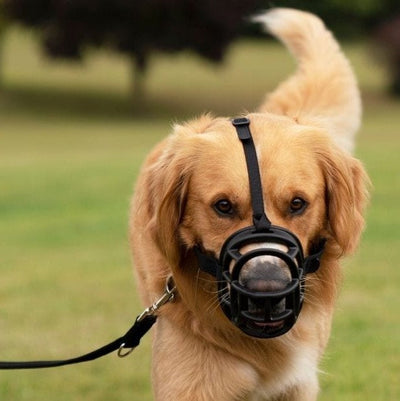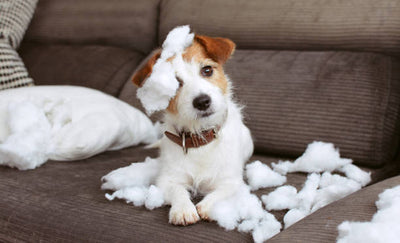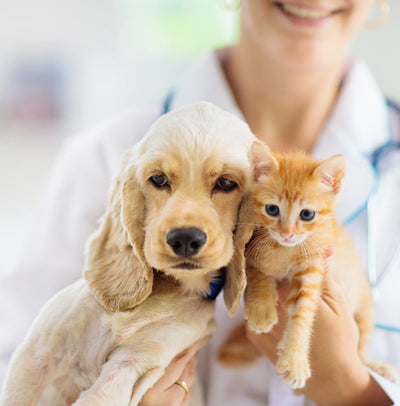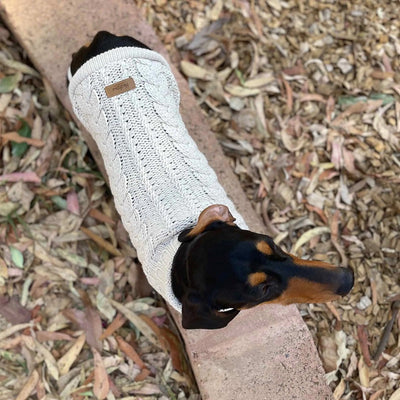
Crate training your dog doesn't have to be overwhelming. With patience, consistency, and the right approach, you can help your pet adjust to their crate and become a more content pet that you can trust with free access to the house.
Crates provide dogs with a quiet, safe space they can go to whenever they feel overwhelmed or needs some alone time. Many dogs continue using their crate as a safe haven throughout their life—if pet parents get them used to it early. Here's what to know about crate training a puppy.
Why Is Crate Training a Puppy Important?
Many people think of crate training solely as a way to keep your dog confined when you're away from home. But the reality is that a crate offers many positives for your pup.
when you're away from home. But the reality is that a crate offers many positives for your pup.
Select the Right Crate for Your Dog.
Selecting the right crate for your pup is key to successful crate training. Our favorite crates are made of wire, and have adjustable frames so they can be expanded as your dog grows. The crate should be large enough so your pup feels comfortable and can turn around, but not too much bigger than that. Shop our range of dog crates and find out what size suits your dog.
Placing a comfortable pet mattress or bed inside helps provide a sense of “home” for your pet. Learn more about our range of crate matts and beds here that are a custom fit for crates.
Get Your Dog Used to the Crate by Offering Treats and Toys.
Start associating the crate with positive things by offering treats and other toys 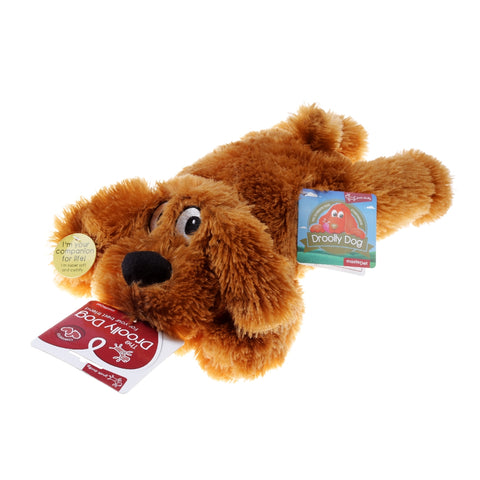 inside the crate. This encourages your pup to go into their “den” on its own accord. Place a few pieces of food or chew toys inside, and leave them there whenever your pup is outside of the crate. Over time, they will start looking forward to entering into it.
inside the crate. This encourages your pup to go into their “den” on its own accord. Place a few pieces of food or chew toys inside, and leave them there whenever your pup is outside of the crate. Over time, they will start looking forward to entering into it.
Place cozy blankets and favorite toys inside the crate with the door wide open and allow your puppy to explore it on their own. If they don't enter the crate, toss in a few treats to encourage further exploration.
Feed your puppy their meals in the crate. If your puppy or dog is still nervous about entering the crate, you can place their food bowl outside of the open crate to help them get more comfortable over time. Slowly begin moving the food bowl closer to the crate each meal, and eventually into the crate, as they are comfortable.
As your pup becomes comfortable eating inside the crate, you can close the door to the crate during feeding. Be sure to open the door as soon as your pup is finished.
Reward Good Behaviour When Crate Training Your Dog.
When your pup is calmly entering their crate to have their alone time, it’s important to reward them for good behavior. Positive reinforcement will help encourage them to stay inside their den. The ultimate goal is for your dog to view their crate as a wonderful place to hang out. You can do this by pairing your dog's choice of going into the crate and settling in the crate with great things happening to them.
Give vocal praise, a treat, or a special toy when your pooch is successfully entering the crate on command. This helps build trust and make your pup feel more comfortable sorting out their own space in the house.
Increase the Length of Time You Leave Your Dog in the Crate Gradually.
One of the most important steps in crate training your pup is increasing the amount of time they’re comfortable spending inside their crate.
Start off by placing them in the crate for several minutes at a time and slowly increase the lengths of time each day, allowing them to get used to it. This is most successful when you notice your pup is looking tired and in need of a rest! Try to avoid leaving them in there for too long during this process because doing so could lead to your pup becoming resentful or anxious about being left inside their crate.
Your dog needs time outside the crate to play, eat, and use the bathroom. Dogs don't want to soil where they sleep, but if there's too long of a stretch without a walk, they might end up doing so.
Apply a calming spray such as Pet Relax on your pets bedding to assist them with settling in.
Make Crate Training Part of the Daily Routine – And Waive Goodbye to Anxiety!
By making crate training a regular part of your pup’s day, they’ll learn to see  the crate as a safe and comfortable place where they can relax. After increasing their comfort level with the crate, offer treats whenever your pup goes inside or plays with their toys inside the crate. This reinforces positive associations with being in there and helps create an enjoyable response for them every time.
the crate as a safe and comfortable place where they can relax. After increasing their comfort level with the crate, offer treats whenever your pup goes inside or plays with their toys inside the crate. This reinforces positive associations with being in there and helps create an enjoyable response for them every time.
Establishing routines is essential for new pups, this practice will allow your pup to spend each night in their crate without any difficulties until morning.
Where do I place my Dogs Crate?
Thinking about the most restful place for your pup's new environment is key to crate training your pup. To help your pup adjust, dedicate the first couple of nights to helping them get comfortable and at ease in their new home. Try spending time in the crate with him, such as feeding him treats and reading aloud from a book, to establish a positive association.
Some pet owners are happy to have the crate in their bedroom, for others, it needs to be in a quiet space. Identify an area in your home that is quiet, has low traffic and that your dog can access on their own if they need to retreat to a safe space.
© weknowpets 2023



